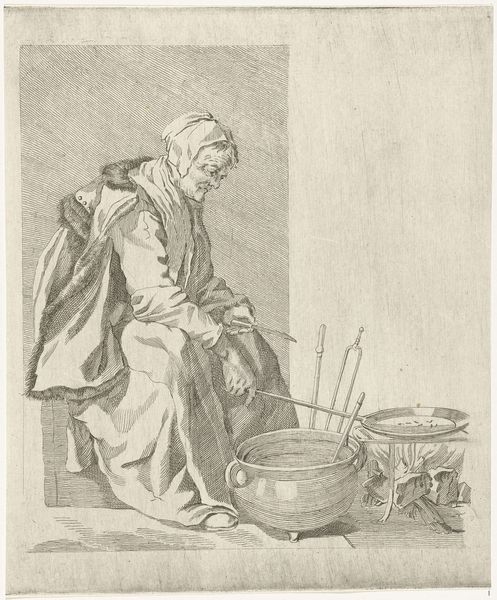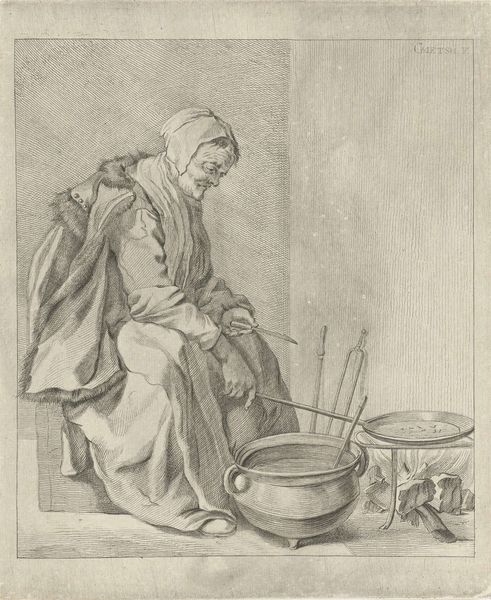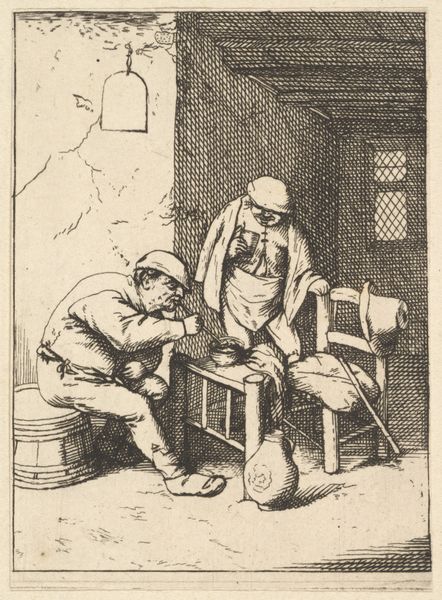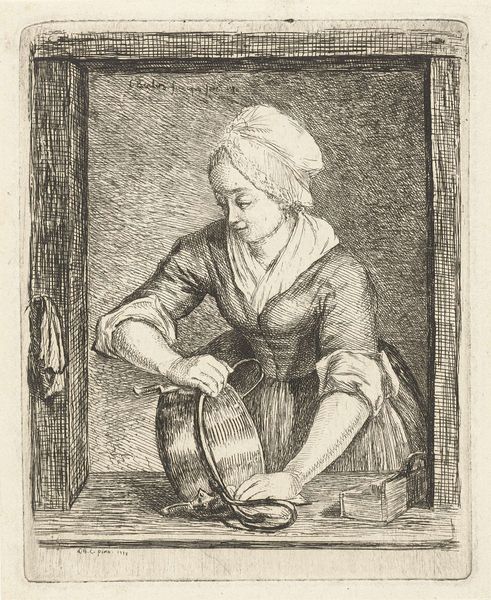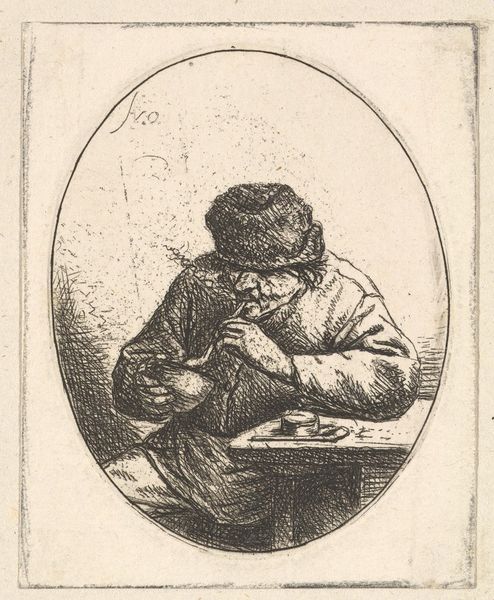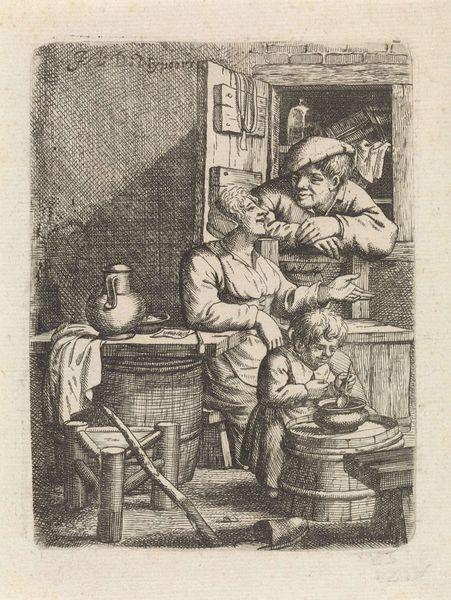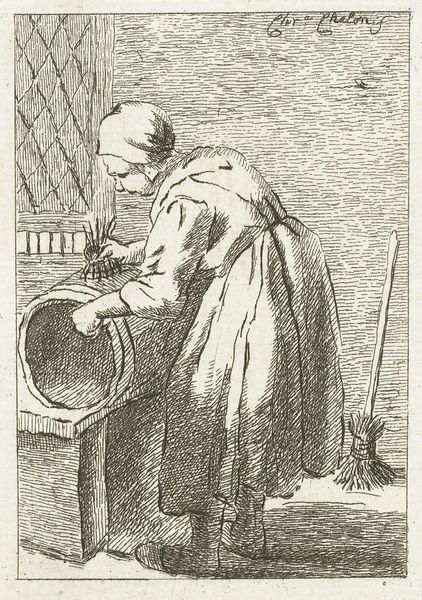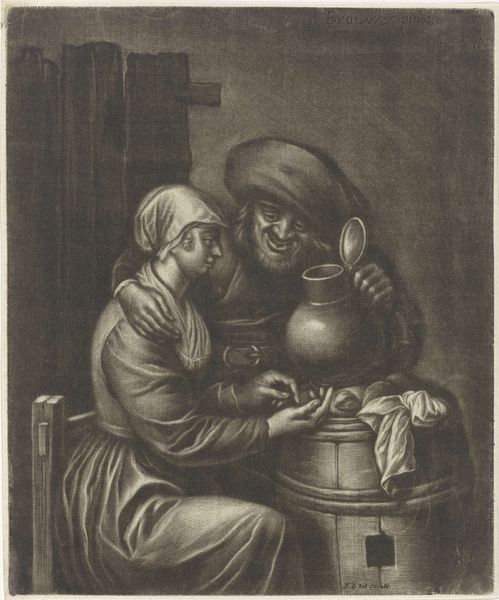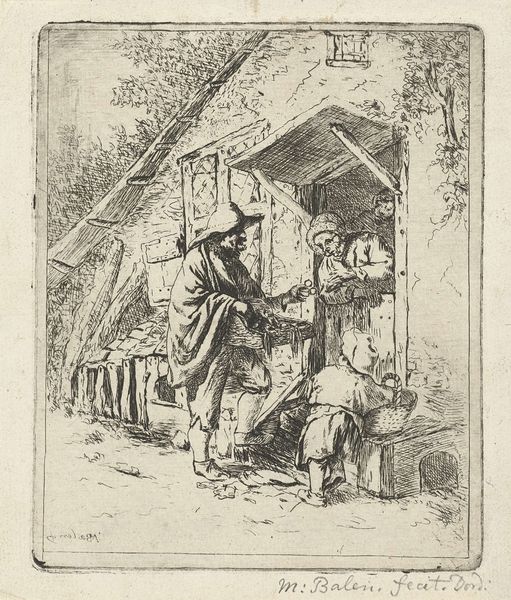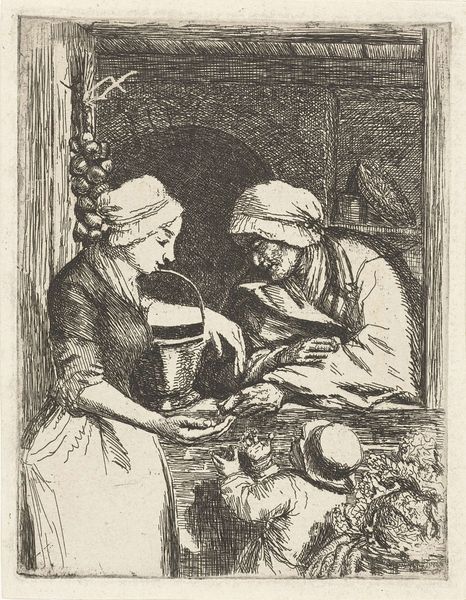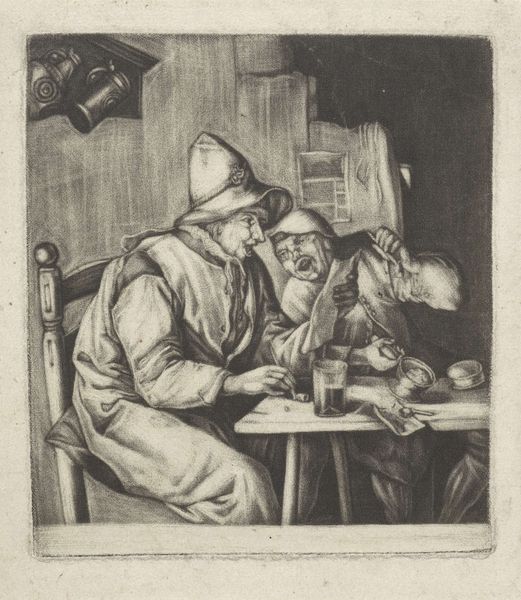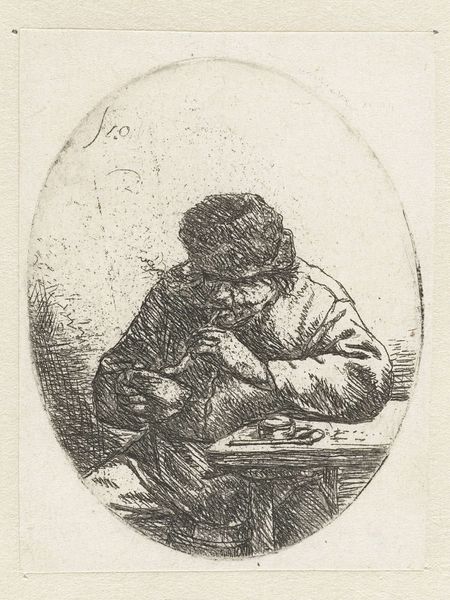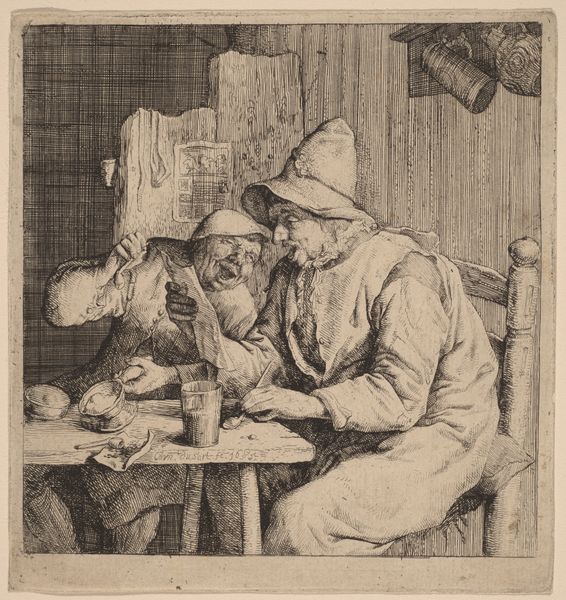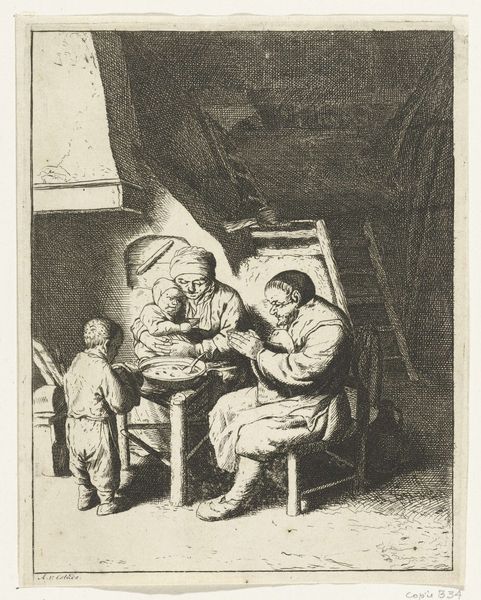
print, engraving
#
baroque
# print
#
vase
#
figuration
#
line
#
portrait drawing
#
genre-painting
#
engraving
Copyright: Rijks Museum: Open Domain
Editor: This is "Pannenkoekenbakster" by Theodor Matham, dating from 1615 to 1676, here at the Rijksmuseum. It's an engraving, and it has a surprisingly homey, intimate feel. The etching seems to capture a very specific domestic moment, a woman making pancakes. What strikes you most when you look at this? Curator: I notice immediately how the quotidian is being elevated here. Genre scenes like this became increasingly popular, reflecting a growing merchant class eager to see their own lives represented. This isn’t a heroic history painting or a religious allegory. It’s about pancakes. And it shows an increasing self-awareness of the Dutch middle class, interested in representations of daily routines, isn’t it? It’s less about celebrating individuals and more about communal identity and national narratives. Editor: So, it's a shift in the subject of art, to represent the daily lives of people and build communal identity. Curator: Precisely! This shift had lasting effects on the public perception of art and artists in Dutch society. One must note the almost journalistic representation of interior and social life in the composition; a kind of “fly on the wall” that speaks volumes about the development of a nation! Where do you see examples of it that particularly impress you? Editor: Perhaps it’s in the attention to the pots and pans, or even the cat watching nearby – things that add mundane details to a scene of daily living. Curator: Good point. See also how the artist made them visually significant within the image composition. Editor: It's interesting to consider how this one engraving reflects broader societal and political changes of the time. I'll definitely look at Dutch Golden Age art differently from now on! Curator: Exactly! Art never exists in a vacuum; it's a reflection of and a participant in the historical forces at play. Seeing this interplay gives us so much insight into ourselves and the times!
Comments
No comments
Be the first to comment and join the conversation on the ultimate creative platform.
